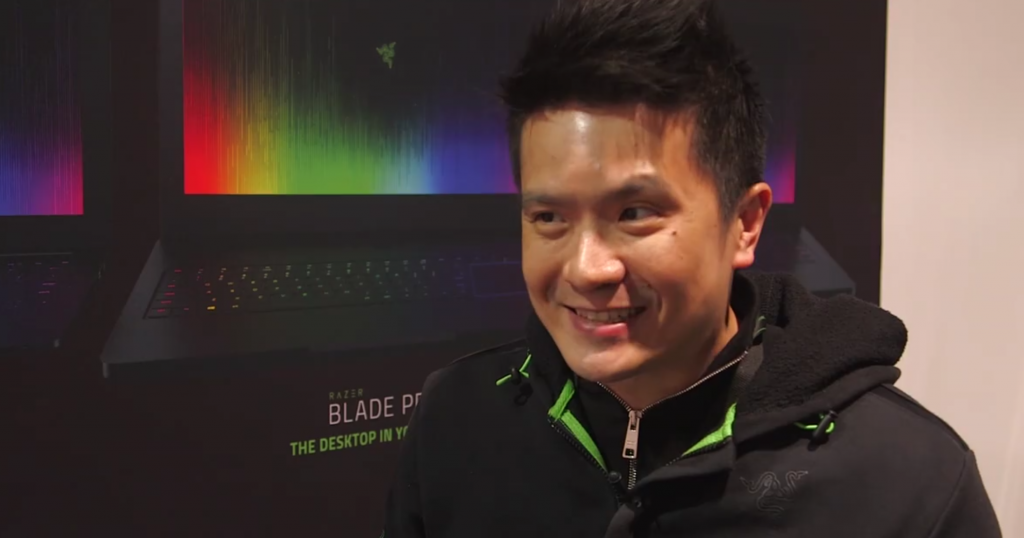Razer and its Singaporean co-founder, Min-Liang Tan, has grown to become an industry leader in gaming systems and peripherals, developing a devoted legion of fans worldwide.
They also happen to be a company that constantly pushes the envelope of what a gaming device and accessory is supposed to be like.
They recently made the news again at the Consumer Electronics Show (CES), which happens annually in January, and is the world’s single largest tech trade event held in Las Vegas, drawing in congregations of tech players from all over the globe.
Followers of the Cult of Razer have always looked forward to this event because in recent years, Razer has continuously put on display outrageous prototypes which are the embodiment of a geek’s wildest fantasies, as well as production-ready devices that can potentially redefine a market segment.
Let’s take a look Razer’s journey at CES thus far.
Razer At CES: 2007 – 2010
I’m sure you are familiar with the story of Razer by now. Originally a maker of gaming mice, their early appearances at CES were rightfully limited to gaming peripherals as well.

Our search for Razer’s earliest appearance in CES came in 2007, when Razer unveiled a prototype for a premium gaming sound system called the Mako, in partnership with THX (now a Razer company).
The Mako was subsequently ready for production a year later, when it appeared again as a finished product at CES 2008.

As CES 2009 rolled along, Razer brought along with it the Razer Mamba, the company’s very first wireless gaming mouse. Wireless mice are anything but new, but Razer’s implementation of it gave gamers then access to a cord-free experience without sacrificing performance.

And finally at CES 2010, Razer moved into the console space when they launched the Onza controller for the Xbox 360.
All these products came at a time when Razer was still in its infancy, but all of that changed from 2011, when the company began their radical gaming revolution.
CES 2011: Switchblade
It was in 2011 that the crazy ideas from Razer truly manifested themselves in product form, and out came the Switchblade, a proof-of-concept handheld gaming console at CES 2011.
Together with engineers who used to be part of big boys Apple, Dell, and HP, Razer built a shrunken down laptop with an adaptive OLED screen-based keyboard keys, which show you different keys when in different programs and games.
Unfortunately, the concept remained as one due to its cumbersome nature and troubled development cycle after CES. The keyboard though, found life in another of Razer’s more memorable products – the very first Razer Blade, where it functioned as a secondary display and a customisable touchpad interface.
The Switchblade is also the first of Razer’s consecutive annual Best of CES awards haul for products showcased at the trade show, which continues until today.
CES 2012: Project Fiona
The Switchblade came at a time when gaming laptops were rapidly gaining popularity and handheld consoles were dwindling, but even then, it was still a laptop at its core.
But not so much for CES 2012, when Razer dropped Project Fiona on the show floors at Las Vegas. While the Razer Blade with the Switchblade caught some glimpses, it was Project Fiona which truly stole the show.
Designed as the only tablet in the world for PC gaming, Project Fiona was a joint effort with Intel, and it explored the possibility of a truly portable gaming on-the-go device without any compromise.
Tablets at this time were on the rise with the iPad leading the way, but where it failed was that it wasn’t able to afford the same computing power of a laptop to enable users to play anything else other than mobile games.
CES 2013: Razer Edge
Where the Switchblade failed, Project Fiona delivered, officially becoming a reality the year after. Thus, the Razer Edge came to be at CES 2013 as the company’s attempt at a zero-compromise gaming tablet.
With a price tag of US$999, at its heart is basically a 10-inch laptop that you can choose between two attachments – the traditional keyboard dock and the gaming controller dock that has become a common sight since Project Fiona.
Unfortunately, this concept of a “gaming tablet” never really caught on, and Razer’s gaming laptop, the Blade, was the only one left standing.
CES 2014: Project Christine
2014 was a year when Razer started toying around with the idea of having their own desktops. Project Christine was unveiled on the show floor of CES 2014 as the world’s most modular PC design.
The PC case itself was made up of smaller cases which house all the individual components that you would normally find within a typical desktop tower. These smaller cases are simply inserted into the central structure to form the entire computer, making it a truly plug-and-play experience.
Sadly, this concept was a little too ahead of its time, and stayed as a prototype ever since.
But that also doesn’t meant that Razer has stayed away from the desktop PC market.
In recent years, we have seen “Designed by Razer” towers that enthusiasts can purchase for their next build, which saw the company partnering with case manufacturers such as NZXT and Antec.
For those who prefer something ready-built out of the box, Razer also had a partnership with Lenovo, which saw the glowing green aesthetics appearing on Lenovo’s gaming computers and monitors, as well as boutique computer company Maingear.
CES 2015: Forge TV
With a new year came a new battlefield which Razer wanted to win in, and this time, it was set in the living room. To take on the Apple TV and the countless entertainment set top boxes available on the market, Razer launched the Razer Forge TV.
Built upon Android, and fresh off acquiring Kickstarter gaming startup Ouya, the Forge TV is designed to be a casual gaming and media consumption device attached to your television. With access to the Play Store, you’d have the best in content that Google has to offer.
With an accompanying controller coming in the form of the Razer Serval that allows you to connect multiple sets of for fun time with your friends, the Forge TV delivers the full social experience of the latest Android games at the time.
In the years to come though, it faded from existence as the specifications become dated, and a replacement was nowhere to be seen.
CES 2016: Razer Blade Stealth
Last year though, Razer took a rather safe approach to their flagship CES product for the year.
2016 was the year that everyone could agree with the statement that Razer makes some of the best laptops anywhere, with its Blade having the Macbook Pro as its only real rival.
With the acclaimed 14-inch Razer Blade and the monstrous 17-inch Razer Blade Pro already in the books, what Razer did next caught a lot of people by surprise – they released an Ultrabook.
Here came the Razer Blade Stealth, as the baby Blade of the bunch. Unlike its siblings, this was not a gaming machine, with specifications that rival what many consider as “business laptops”.
That’s not to say Razer has no ace up its sleeves though, as beside the Razer Blade Stealth lies a peculiar looking case that was connected to the laptop. This was the Razer Core, the muscle which lets the diminutive Blade Stealth transform into a full-on gaming machine with a desktop graphic card housed in a svelte case.
CES 2017: Project Ariana & Project Valerie
Which bring us now to 2017. The Consumer Electronics Show has now officially ended after happening over this past weekend, and for this year, Razer has gone back to their experimental roots once again.
This year for visitors to CES, they have in store two of their signature female named projects.
First is Project Valerie. Elephant in the room out of the way, this was more or less the updated Razer Blade Pro which they launched just a few months prior, but with it now comes two additional laptop screens hinged at each side.
The fear of unwieldy laptops aside, Razer conceptualised this in anticipation of future technologies which may make such an idea feasible.
Everyone knows Razer as a company which has OSVR, their attempt at virtual reality peripherals. Being a year when critics are expecting VR to finally go mainstream, the same sentiment was expected from Razer.
Instead, Razer showed off a projector, and a very special one at that. Called Project Ariana, the projector expands your screen outside of just your monitor, turning part of your room into the game itself.
All this in the name of a fully immersive experience without the need to wear cumbersome bodily add-ons. Project Ariana also happens to be an extension and the future of Chroma, Razer’s reactive and highly customisable RGB lighting feature found in all their products and devices.
7 Back-To-Back Best Of CES Award Marred By Bad News
Unsurprisingly, Razer took home Best of CES awards for Project Ariana in the Best Gaming Product and People’s Choice Winner categories.
Usually at this point of time CEO Min-Liang Tan would be addressing the Razer faithful about holding a post-CES appreciation sale due to these wins, but that will have to wait as something dire just happened after the trade show closed.
Earlier today, the Razer CEO posted this status update onto his Facebook page. It details how two project prototypes had been stolen from the Razer booth and that relevant authorities have been involved as the search for them is underway.
Definitely not the way Razer wanted to celebrate this year’s CES win – so sorry Razer fans, it looks like the sale won’t be happening this year, but instead, let’s hope for the safe return of those stolen prototypes.
Featured image credit: Techcrunch














